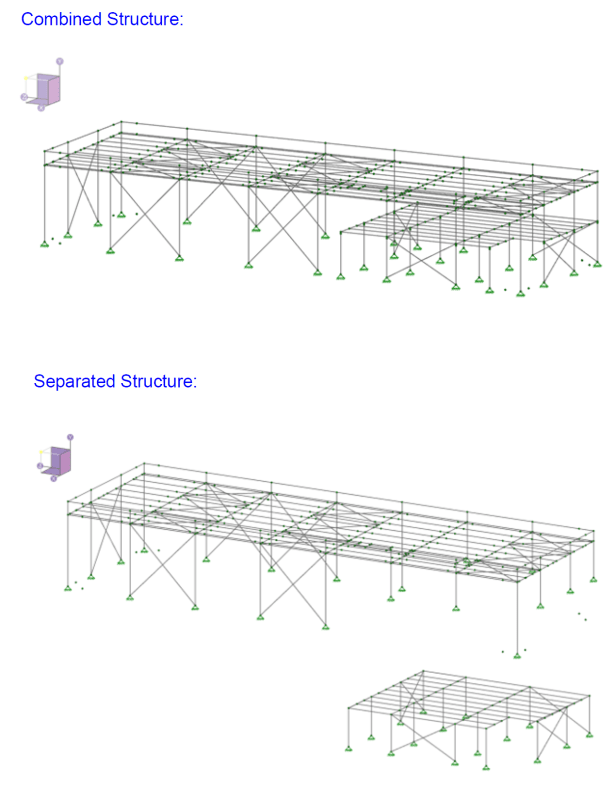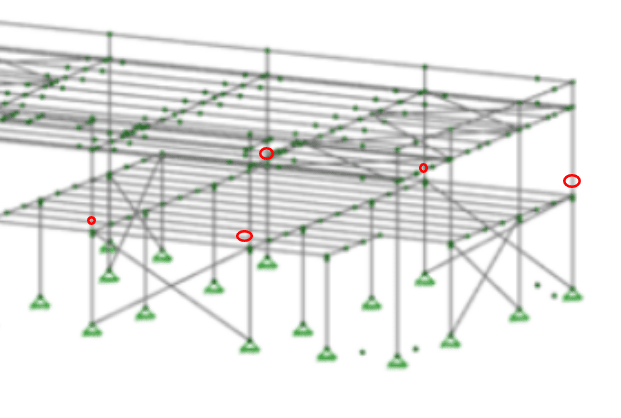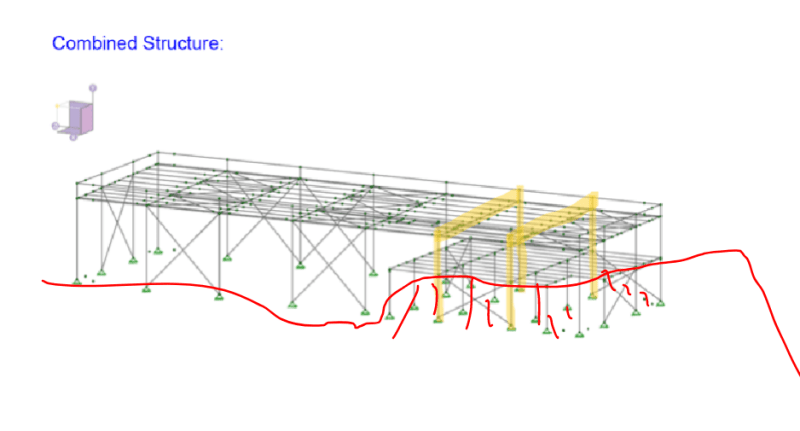Daniel-PRE
Specifier/Regulator
I'm reviewing a design where the engineer is wanting to use two stage analysis to get out of loading the roof with seismic weight from the concrete topped mezzanine deck. The problem is the base for the upper structure is not all at one level. This doesn't seem like the right use of the two stage analysis, but they're adamant they can use it. Am I missing something? See image below showing how they propose the analysis will work for the "upper" and "lower" structures...




